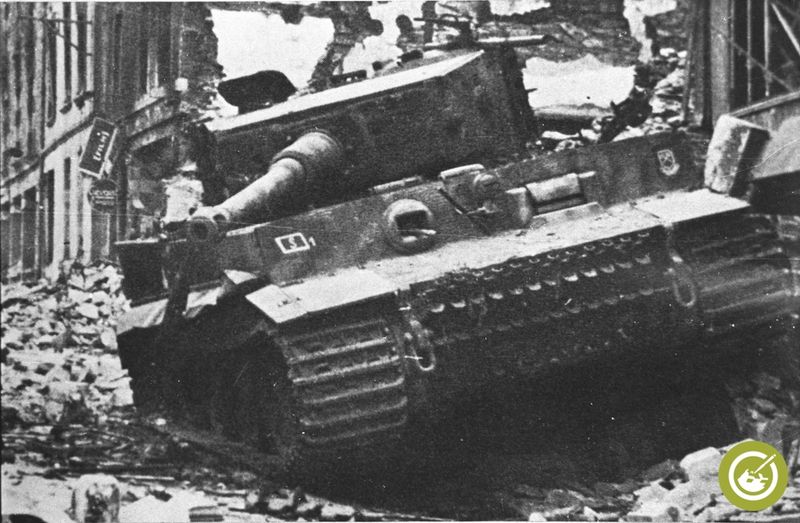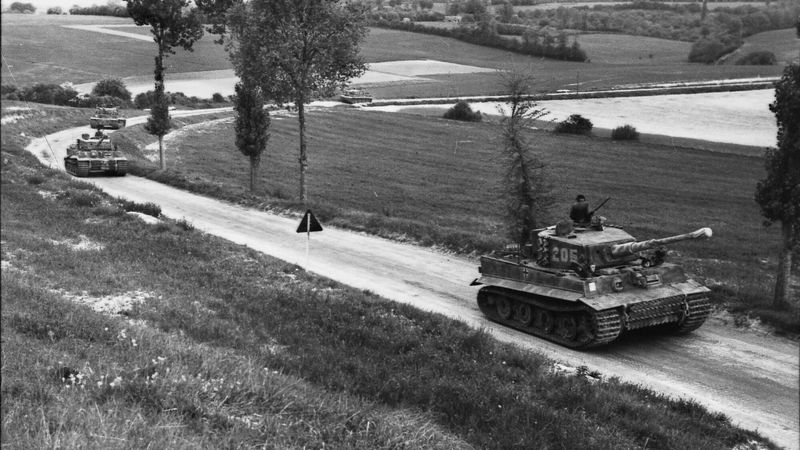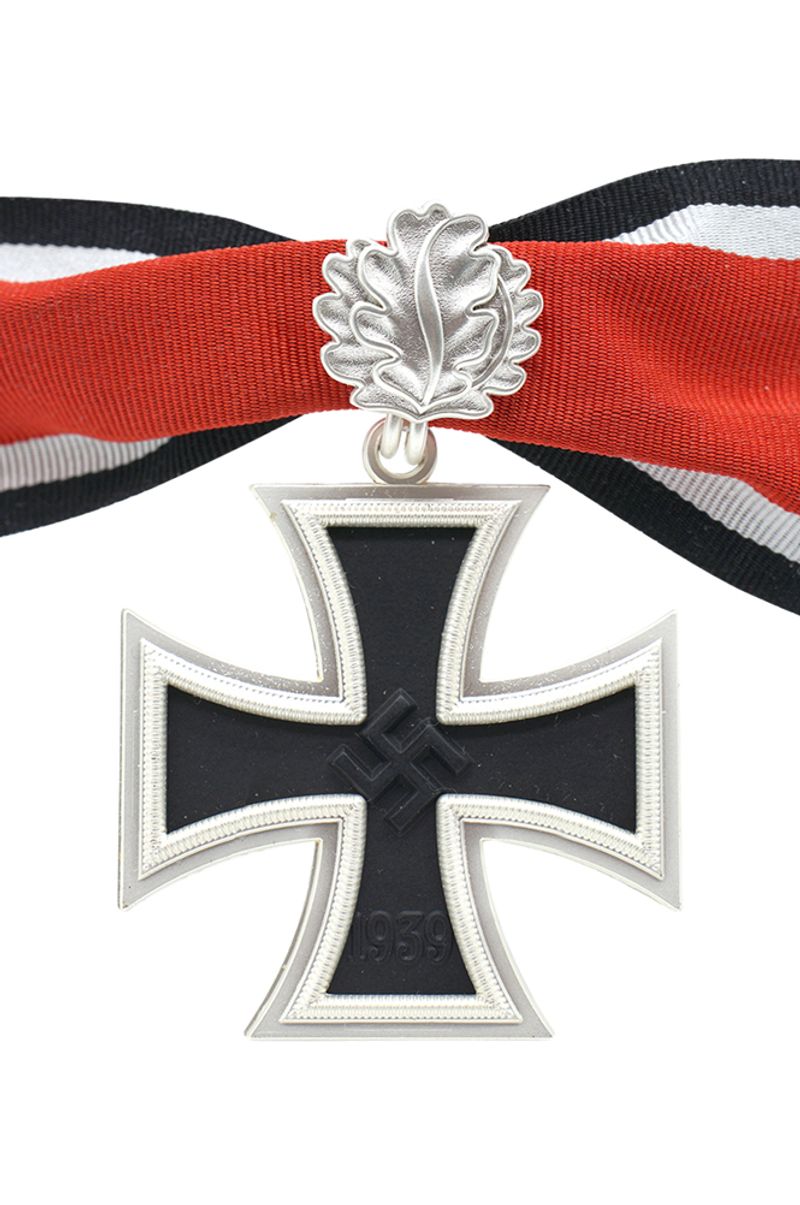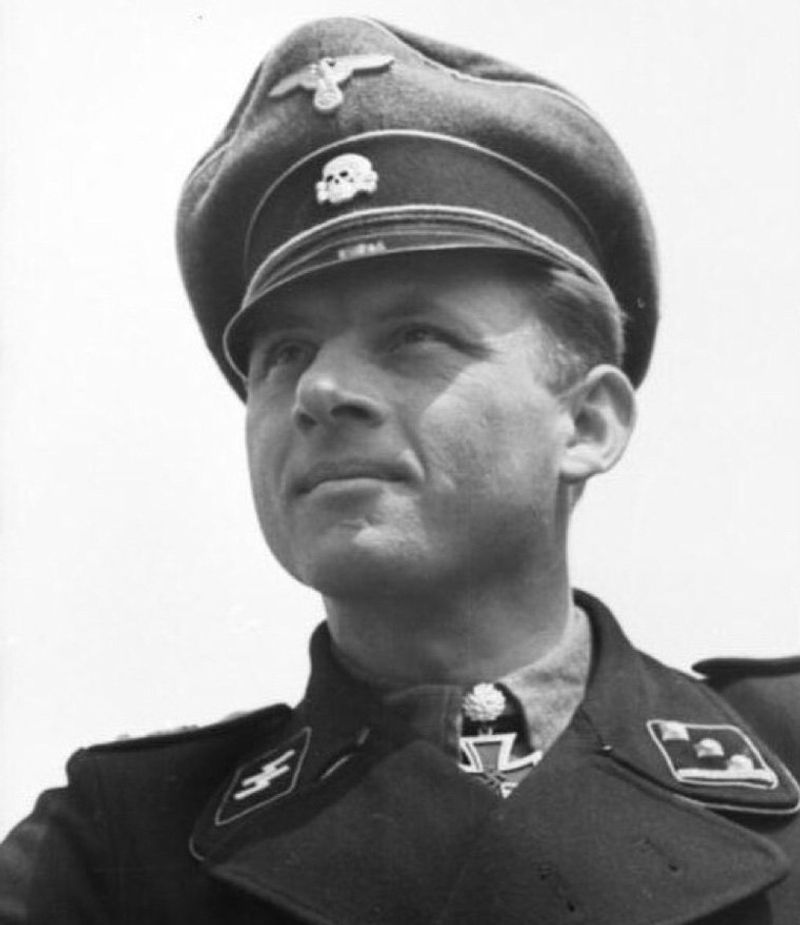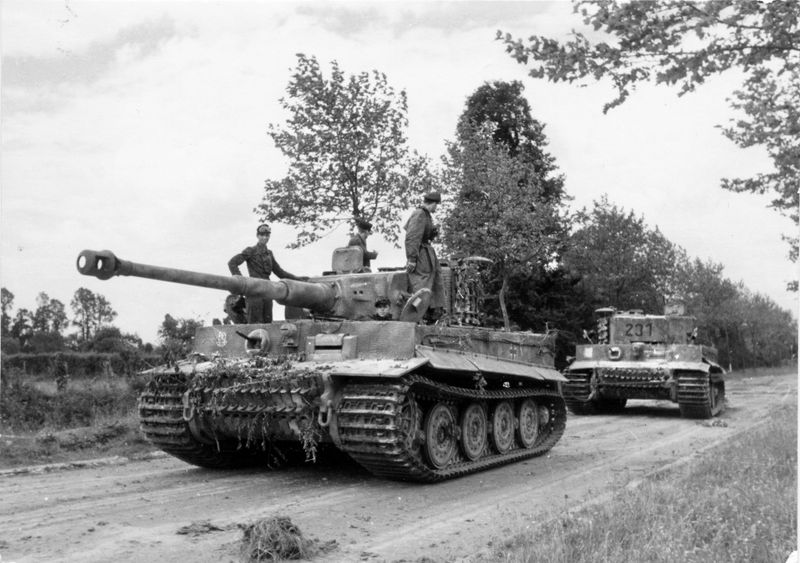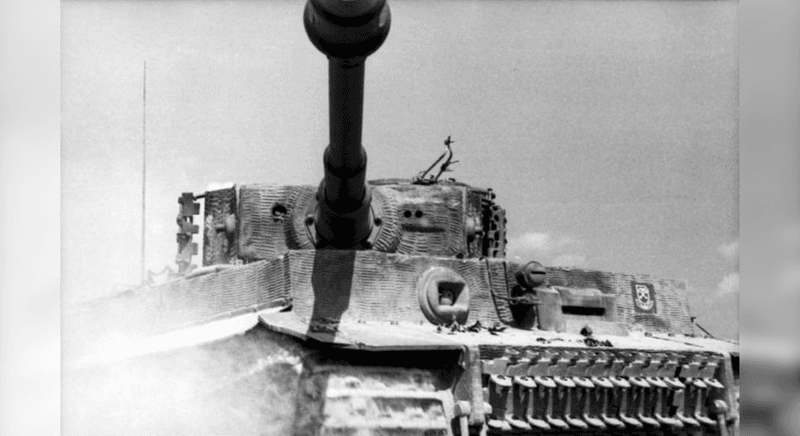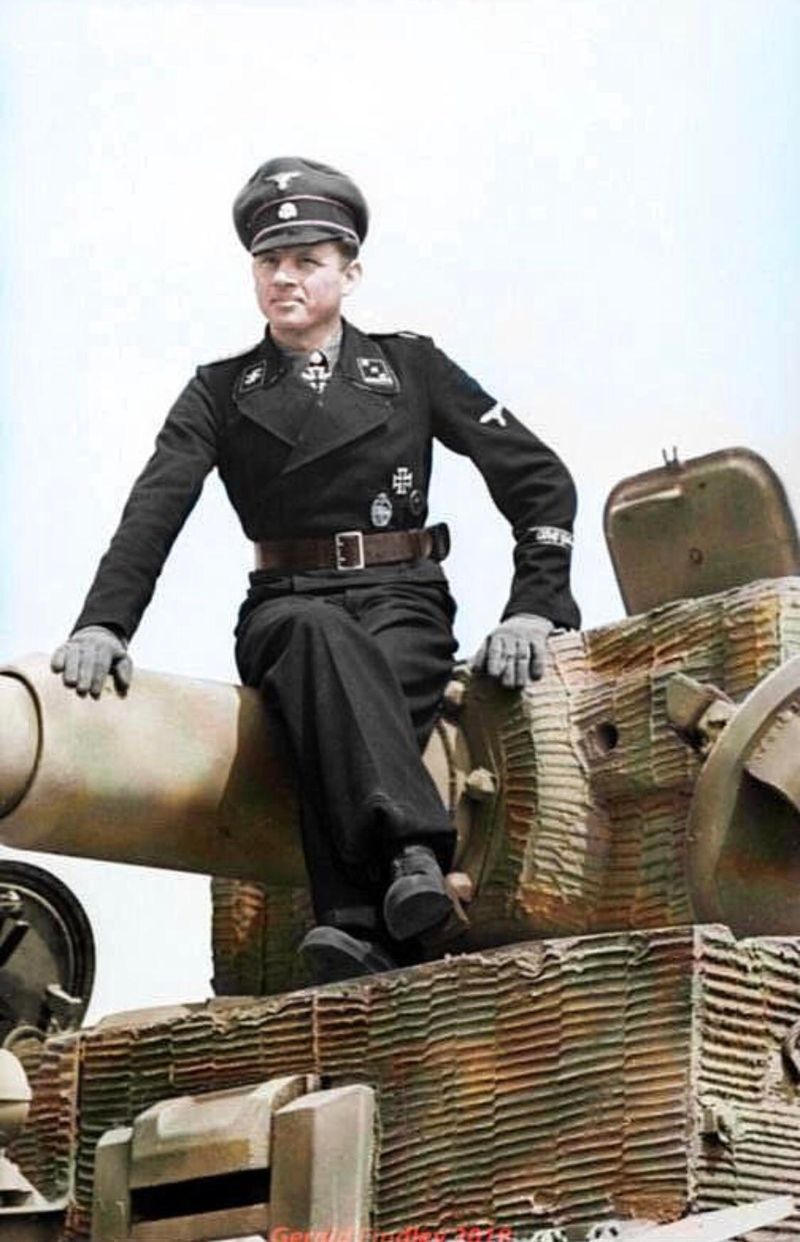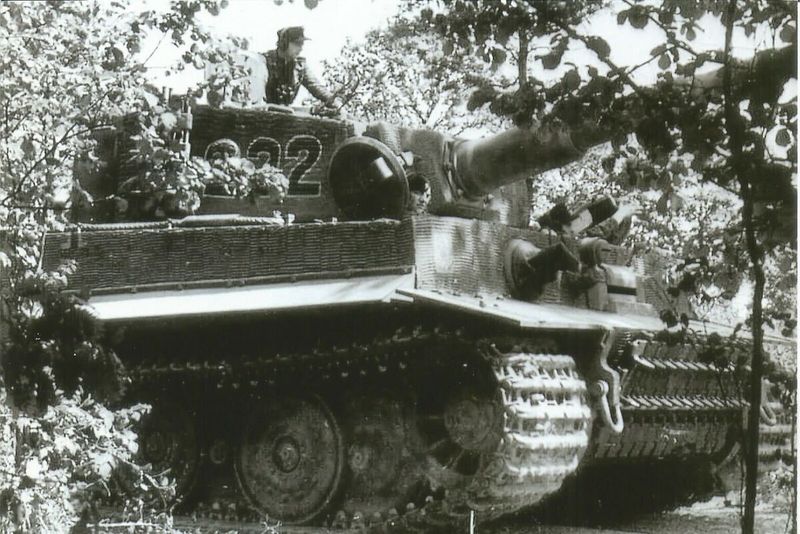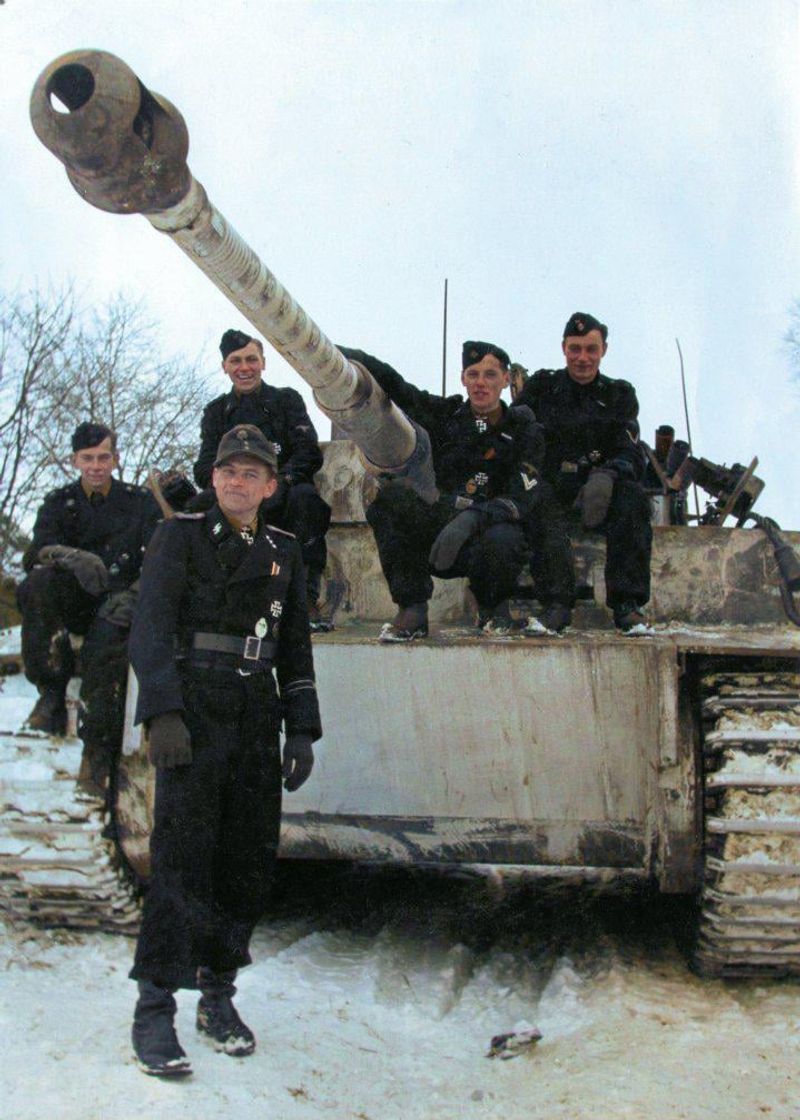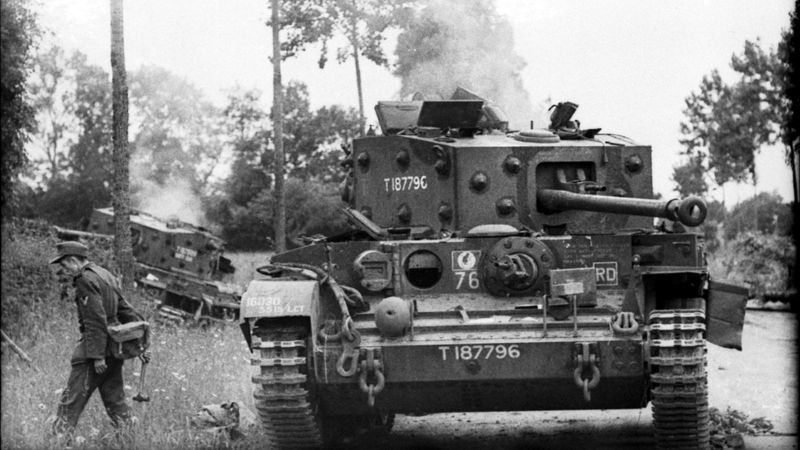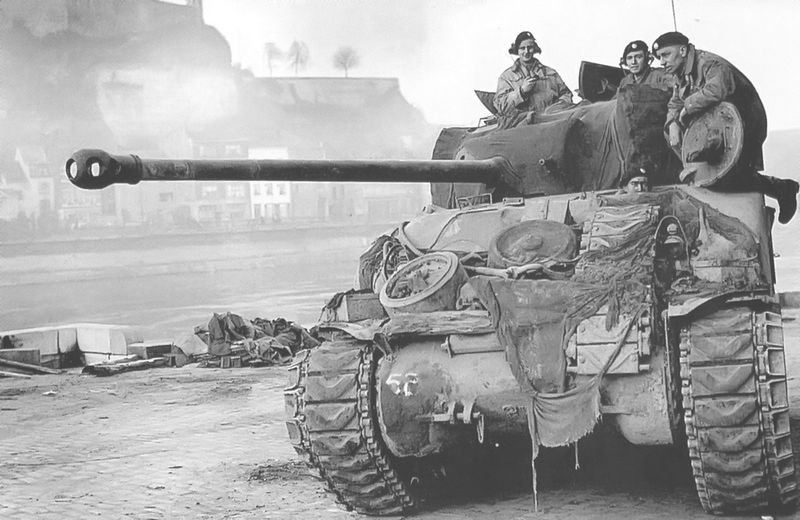Michael Wittmann remains one of the most prominent and controversial tank commanders of World War II. His actions on the battlefield, particularly his effectiveness in armored engagements, have made him a notable figure in military history. While his tactical capabilities earned him significant recognition during the war, his legacy is also closely tied to the broader and complex context of the Nazi regime and the Waffen-SS.
1. Took Out 14 Tanks in Just 15 Minutes
Amidst the chaos of the Battle of Villers-Bocage, Michael Wittmann executed a maneuver that stunned both friend and foe. In just a quarter of an hour, he managed to destroy 14 enemy tanks, turning the tide of the battle. His daring approach involved ambushing a British convoy, catching them completely off guard. With a precise combination of skill and audacity, Wittmann and his Tiger I tank obliterated 15 personnel carriers and two anti-tank guns, leaving a trail of devastation.
2. Credited With Over 130 Tank Kills
Wittmann’s battlefield record, which includes over 130 enemy tank kills, reflects the brutal efficiency of armored warfare during World War II. His actions demonstrated a calculated approach to combat, often capitalizing on enemy vulnerabilities with precision and timing. These numbers are not merely statistics—they represent numerous engagements marked by destruction and the high stakes of mechanized conflict. Wittmann’s role in these battles continues to draw analysis from military historians, serving as a stark example of how individual command decisions can influence outcomes on the battlefield.
3. Earned the Knight’s Cross With Oak Leaves and Swords
Among Nazi Germany’s highest military honors, the Knight’s Cross with Oak Leaves and Swords was awarded to Michael Wittmann. This distinction was conferred upon soldiers who demonstrated significant battlefield leadership and valor. Wittmann’s receipt of the award reflected his role as a prominent figure within the German military. The recognition underscored his tactical effectiveness during combat operations and his symbolic value within the wartime propaganda narrative.
4. Became a National Hero in Nazi Propaganda
During WWII, Wittmann became an emblem of German military prowess through Nazi propaganda. His exploits were magnified to boost morale and instill a sense of invincibility among German troops. The portrayal of Wittmann as an unbeatable tank ace served as a powerful propaganda tool. His image was carefully crafted to symbolize the superiority of the Wehrmacht. This constructed heroism extended beyond his battlefield achievements, embedding him into the German national consciousness as a figure of military excellence and bravery.
5. Destroyed an Entire Armored Column Alone
In a daring solo assault, Wittmann took on an entire British armored column at Villers-Bocage. His Tiger I tank rolled out ahead, decimating enemy forces with calculated precision. Wittmann’s audacious attack demonstrated his confidence and mastery over armored warfare. The destruction of this column without immediate backup underscored his exceptional tactical prowess and fearlessness. Each strike was a testament to his ability to execute high-risk maneuvers against overwhelming odds, solidifying his reputation as one of WWII’s most legendary tank commanders.
6. Never Backed Down From a Fight
Wittmann’s battlefield philosophy was marked by relentless aggression and an unwavering resolve. Known for never retreating, he often opted to engage superior enemy forces head-on. This bold approach was both his hallmark and his edge in combat. His aggressive tactics struck fear into opponents, knowing Wittmann would not hesitate to fight against any odds. His unyielding nature became legendary, exemplifying a warrior’s spirit that prioritized victory over caution. Wittmann’s daring style left an indelible mark on armored warfare strategies.
7. Served in the Waffen-SS’s Elite Panzer Divisions
Wittmann served in the elite Waffen-SS 1st Panzer Division “Leibstandarte,” a unit renowned for its skill and loyalty to Hitler. As a member of this formidable division, he honed his tank warfare skills and became part of an elite group of soldiers. His service in such a prestigious unit further highlighted his abilities and commitment to the Nazi cause. The division’s reputation for excellence and fierce combat tactics mirrored Wittmann’s own battlefield ethos. His association with this unit underscored his standing as a premier tank commander.
8. Survived Multiple Direct Hits
The Tiger I tank’s robust design, combined with Wittmann’s tactical acumen, often enabled him to survive encounters unscathed. Even under heavy fire, Wittmann’s ability to maneuver and adapt in battle was unmatched. This resilience in the face of danger allowed him to emerge victorious from intense skirmishes. The Tiger I’s formidable armor played a crucial role in safeguarding Wittmann and his crew. His survival through multiple engagements was a testament to both his skill and the engineering marvel of his tank.
9. Fought on Both Eastern and Western Fronts
Wittmann’s tactical expertise was showcased on both the Eastern and Western Fronts. Initially gaining recognition against Soviet forces, he was later transferred to France, where he continued to build his legendary status. His adaptability to different combat environments reflected his comprehensive understanding of warfare dynamics. Wittmann’s ability to perform on multiple fronts demonstrated his versatility as a commander. This dual-front experience enriched his strategic approaches, contributing to his enduring legacy as a versatile and effective tank ace.
10. Trained as an Infantryman Before Becoming a Tank Ace
Michael Wittmann’s military journey began on foot, serving as an infantryman before transitioning to the mechanized might of tanks. This foundational experience as an infantryman provided him with a unique perspective on battlefield tactics. His transition to tank warfare marked the beginning of a storied career where he found his true calling. This infantry background contributed to his comprehensive understanding of ground combat, enhancing his effectiveness as a tank commander. Wittmann’s rise from infantry to tank ace remains a compelling aspect of his military narrative.
11. Became a Tank Commander by Age 29
By the age of 29, Wittmann had ascended the ranks to become a formidable tank commander. His rapid rise was fueled by his effectiveness on the battlefield and leadership acumen. Wittmann’s ability to inspire and lead his crew underlined his command capabilities. His tenure as a young commander witnessed numerous victories that contributed to his legendary status. This early leadership role set the stage for his subsequent achievements and left a lasting impact on his peers and adversaries alike. Wittmann’s command legacy continues to influence modern military leadership.
12. His Death Remains a Mystery
The circumstances surrounding Wittmann’s death in 1944 remain shrouded in mystery and intrigue. Although widely believed to have been killed by Allied forces, conflicting reports and theories persist. This ambiguity adds a layer of myth to his already legendary status. Various accounts differ on the exact cause and responsible unit, contributing to the ongoing fascination with his life and death. Wittmann’s enigmatic end continues to captivate historians, ensuring his story remains a subject of debate and speculation.

